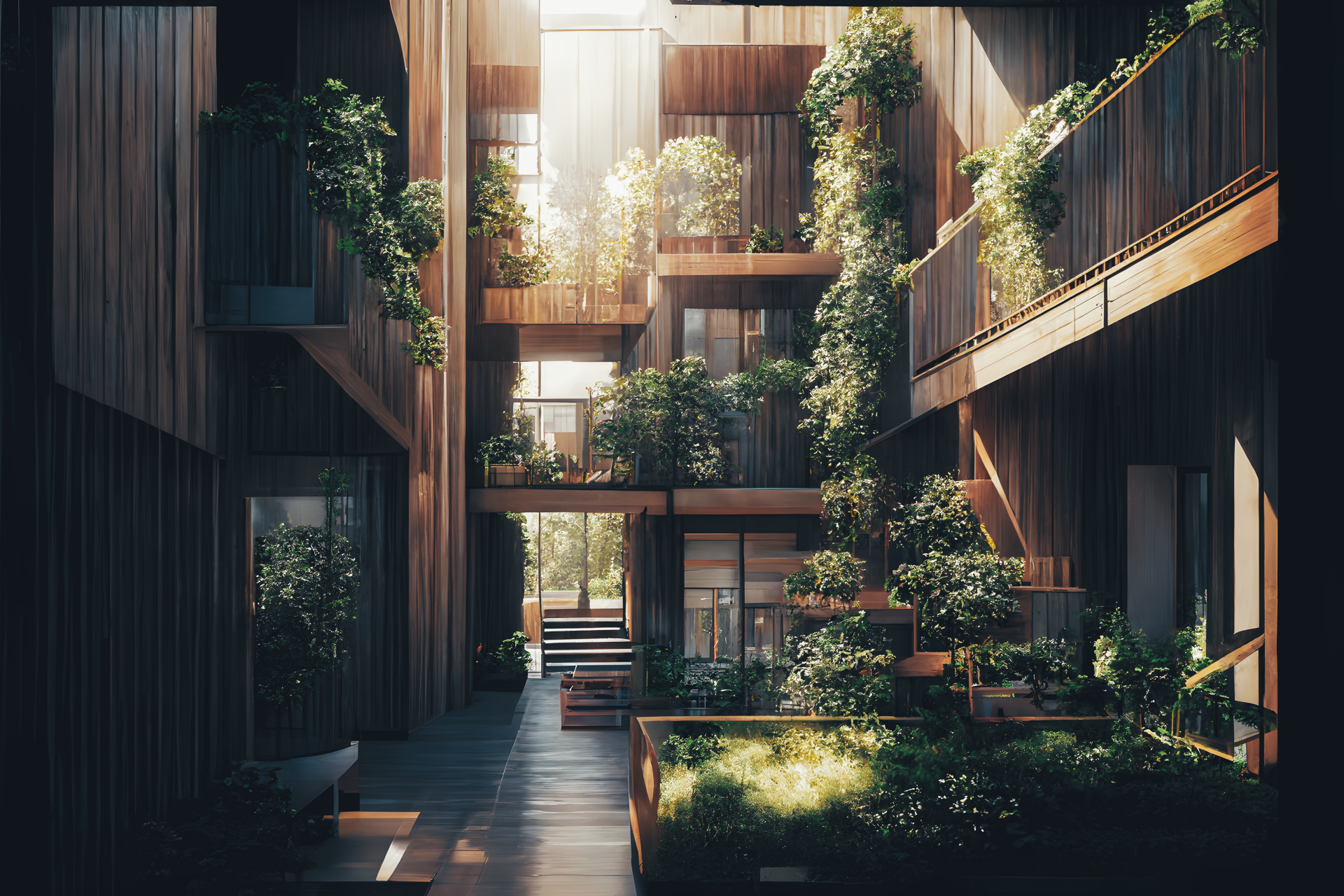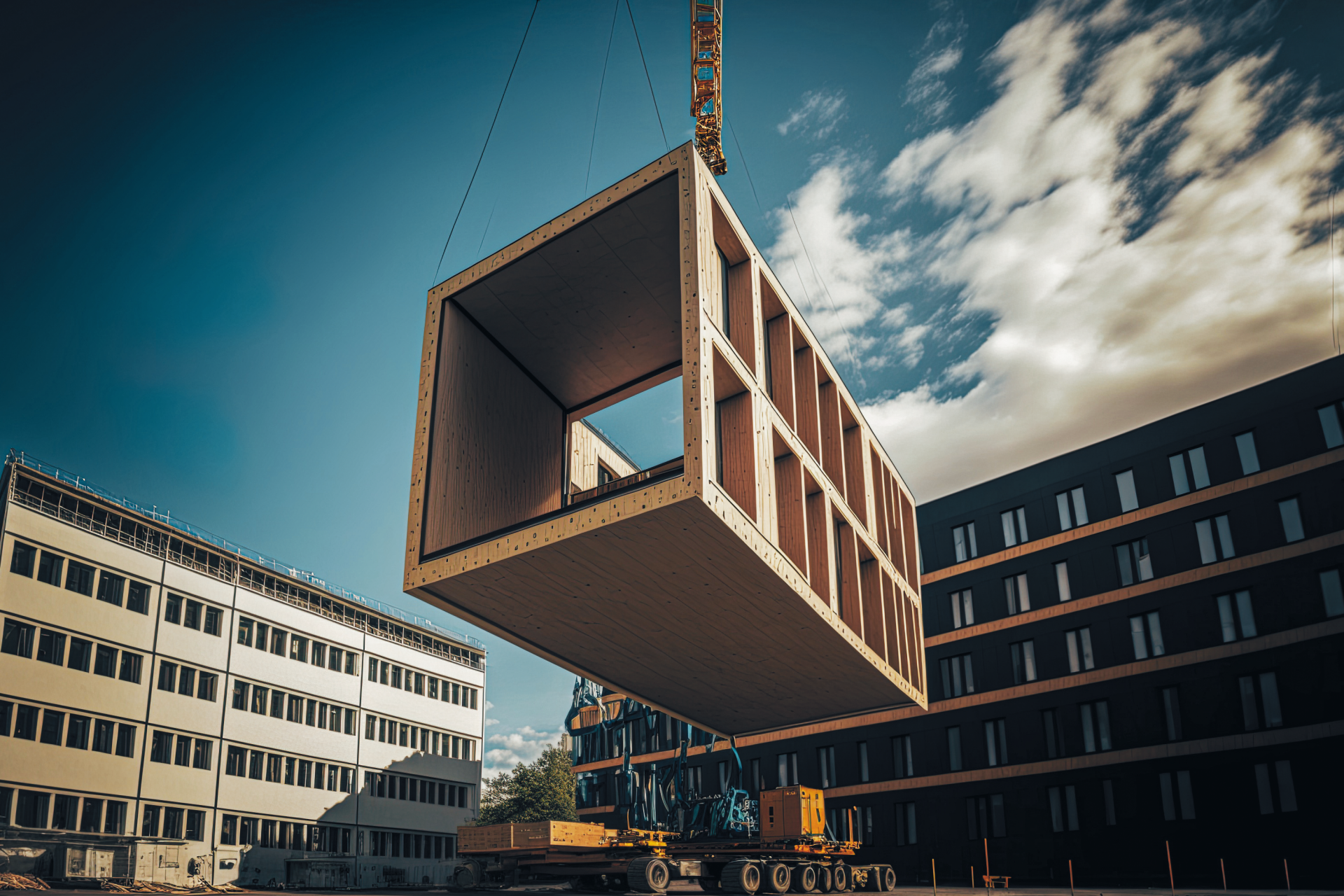
- INSPIRATION
- INDUSTRIAL TIMBER CONSTRUCTION
Industrial timber construction - then, now and in the future
- Article
Prefabricated construction elements are nothing new, but the way in which they’re handled offers major potential for development. Lars Stehn, Professor of Construction Management and Building Technology at the Department of Civil, Environmental and Natural Resources Engineering at Luleå University of Technology, is researching this.
“The technical platform is prefabrication. Industrial construction is the way of dealing with prefabrication,” he says.
The field has broadened and evolved since 2004, when Lars Stehn was appointed Sweden’s first professor of timber construction at Luleå University of Technology. His research focuses on industrial construction nowadays, specialising in efficient, climate-neutral production.
“I’m an engineer, or a timber designer. Our research is looking at integration in building construction between industrialisation and sustainability; or, in other words, the management of building technology, climate and people. So the subject deals with all kinds of aspects, blending engineering with social and management issues.”
This mix – considering the technology as well as its impact on humans and the environment – is perceived by Lars Stehn as a success factor for the research.
“But keeping such a diverse group of researchers together can present a challenge,” he says.
Modular element from the factory
He uses industrial timber construction as an umbrella term that includes industrial construction using modular joists and solid timber elements with very high levels of prefabrication at the factory, as well as the industrialised timber construction of frame component systems made from solid timber and laminated timber.
Lars Stehn tells us how Sweden has been actively working with prefabrication since the 1930s, mainly in the construction of housing, and the industry has amassed a lot of intelligence since then, not least in relation to the timber industry. The Swedish housebuilding industry, itself a legacy of so called catalogue houses in the US, has made a significant contribution to the industrialised building construction of today.
“The technical platform is prefabrication. Industrial construction is the way of dealing with prefabrication; with an organised construction process and standardised practices, for example.

Greater productivity
As part of the study entitled Produktivitetsmått för industriellt träbyggande (Productivity measures for industrial timber construction), Lars Stehn demonstrates that the timber construction sector for apartment blocks was thirty per cent more productive and construction times were more than three months shorter than for traditional construction.
“There’s a lot of prefabricated construction going on around the world. The difference is in how the whole production system is managed. We’ve spent twenty years, both in academic circles and among companies, verifying that industrial timber construction works, by validating methodologies and techniques,” he says, listing five points that are important for the further development of the field.
- The major construction contractors need to embrace industrial construction technologies and practices.
- New, specialist contractor companies should be established, maybe through partnerships
between timber component suppliers and the construction sector. - Continued streamlining of practices, methodologies and production for the industrial timber construction companies that already exist.
- The Nordic countries are at the forefront of this field and should be able to export both knowledge and technology.
- Property owners, authorities, insurance companies and sponsors need to learn more about how timber actually works as a building material.
“It’s important for people to base their decisions on the right information. Everybody working in the field has a responsibility to go on communicating facts. We’re starting to see a kind of ‘ketchup effect’, with more people venturing to build large timber structures, so we need to keep things going.”